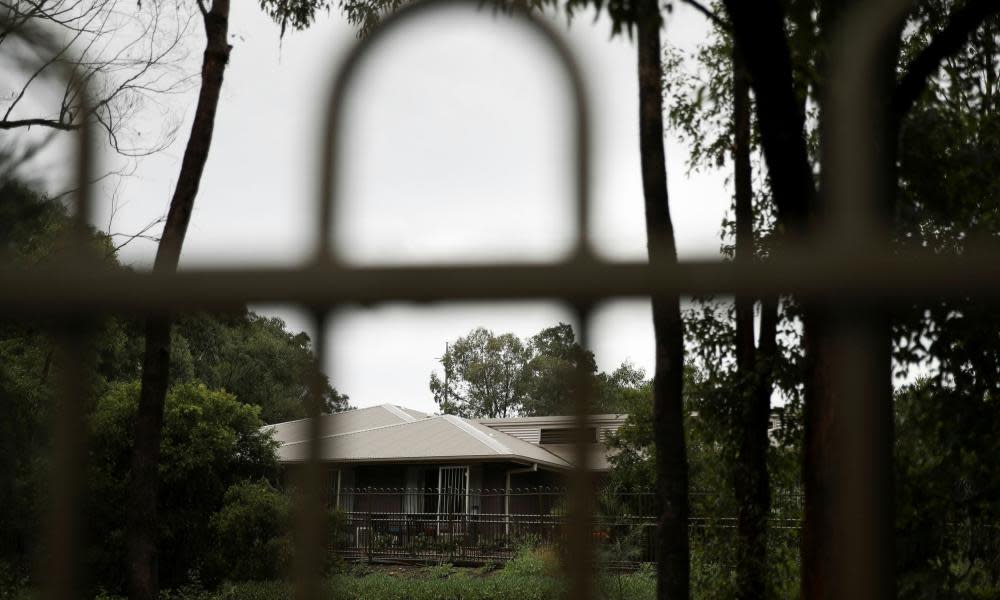Newmarch House took six days to accept government-funded coronavirus medical staff

The operators of the Newmarch House aged-care home, where 19 residents have died from Covid-19, waited six days before allowing a federal government-funded surge workforce of private medical clinicians to enter its facility, a Senate inquiry focusing on aged care during the pandemic has heard.
Senior health bureaucrats also told the Senate committee there have been reports of family members of aged-care residents “who for ideological reasons don’t accept the science behind vaccinations” that have been subsequently barred from visiting their relatives in facilities because of a recent requirement under the aged care visitation code that all visitors must have this year’s flu shot before entry.
“Those people have been in recent times complaining about the measures, and certainly aged-care providers … are reporting some resistance from some individuals who don’t accept a vaccination, proof of vaccination, is required for entry to visit their loved ones,” said Michael Lye, deputy secretary of the aged care division of the Department of Health.
Related: Investigation into possible breaches of coronavirus infection control at Sydney's Newmarch House
The chief medical officer, Brendan Murphy, told Tuesday’s Senate select committee on Covid-19 that he was “very confident” that a “bad influenza season” would cause “far greater” deaths in aged-care facilities than what has so far been seen from Covid-19, pointing to the 2017 flu as an example of a more deadly outbreak at multiple Australian residential facilities.
The committee heard that the median age of Covid-19 fatalities in Australia is 80 years old, and that 29% of deaths in Australia have occurred at residential aged-care facilities.
The aged care quality and safety commissioner, Janet Anderson, reported a spike in complaints to the regulator from families of residents in aged-care facilities, from 371 nationally in March to 760 in April, however she noted these did not reflect the national code for visitation that was released in May that restored visitation at many facilities that had halted it.
The revelation about operator Anglicare’s surge staffing decision was one of several outbreak response issues identified by senior Department of Health officials and Anderson, who described the effort to contain the virus spread at the Newmarch facility – Australia’s second biggest cluster to date – as “not a compellingly good example” of management.
“(We) concluded that they needed significant help in their management of that outbreak,” said Anderson, the chief of the Aged Care Quality and Safety Commission, the sector’s regulator that intervened in the situation at Newmarch earlier in May, with action that included ordering an independent adviser to be appointed, and halting all new admissions to the facility.
“We weren’t getting the responsiveness that we expected from an aged-care service managing an outbreak,” Anderson said.
Related: Private medical staff who worked on Ruby Princess were sent into Newmarch House
Amy Laffan, the acting first assistant secretary in the Department of Health’s aged care reform and compliance division, responded to a question from the Liberal senator James Paterson, confirming the date that Aspen Medical surge staff were deployed to Newmarch House after a delay of several days.
“So Aspen was first offered to Newmarch House on the 14th of April, and ... were first deployed on the 20th of April,” she said.
Anglicare would later allege a Newmarch clinician breached personal protective equipment (PPE) protocol while working in the Covid-19 positive section of the facility.
Lye also responded to a question from the Labor senator Kristina Keneally about the Anglicare chief executive, Grant Millard, who claimed that requests for PPE from the national stockpile were not met.
“We had some degree of difficulty with the organisation in terms of responding to requests to identify their needs in terms of PPE,” Lye said.
Email: sign up for our daily coronavirus newsletter
App: download it and never miss the biggest stories
Social: follow us on Facebook, Instagram or Twitter
Podcast: listen to our daily episodes on Apple Podcasts, Spotify or search "Full Story" in your favourite app
“So we had an issue ... in terms of the organisation’s ability to both ask for and receive PPE and that could account for the CEO’s concern that they didn’t have it. I think the Department (of Health) would say that the organisation may not have been sure about what they did actually have.
“On several occasions throughout the timeline of the Newmarch outbreak, it’s two or three days before what is required is specified by the organisation,” Lye said.
Asked about the lessons the Department of Health and the aged care regulator had learned from the Newmarch outbreak, Anderson said she now personally phones the manager of any aged-care facility within 36 hours of a case being identified. The committee also heard that authorities are now more “energetic” and “assertive” in conveying to facility managers how difficult it is to control an outbreak, and the impact it will have on staffing.
The first case at Newmarch House was a part-time carer who worked six shifts before being diagnosed with the virus on 11 April, the day before the first resident returned a positive result. Six days later, 25 residents were infected, and 14 staff had tested positive.
Last week, the facility’s 19th resident died of Covid-19, with a further two deaths also reported of residents who had contracted, but later recovered from Covid-19 before their deaths. There have now been 71 cases reported from Newmarch House, from 34 staff and 37 residents.

 Yahoo News
Yahoo News 
